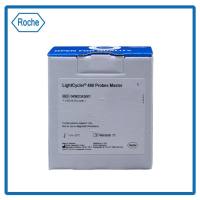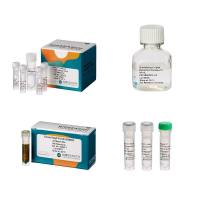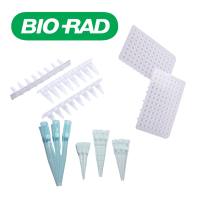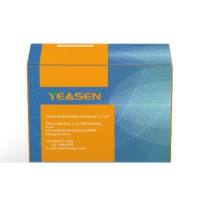Hybridization Histochemistry Using Radiolabeled Oligodeoxyribonucleotide Probes
互联网
764
The technique of hybridization histochemistry (1 ) was developed as a means of locating specific mRNA populations in tissue sections using radiolabeled recombinant DNA probes with a complementary nucleotide sequence to the target mRNA. The original method used frozen sections fixed with an ethanolbased fixative and hybridized with cDNA probes. There have been few necessary modifications to this technique, apart from the change to an aldehyde fixative and an expanded range of probes and labels to choose from. Since these initial experiments, many methods for hybridization histochemistry have been published. These are often encumbered by additional procedures, usually aimed at reducing background, many of which are unnecessary or of limited use. In the method we describe here using radiolabeled oligodeoxyribonucleotide probes on frozen sections, we have always endeavoured to “keep it simple.” Ours is a rapid technique that is applicable to a range of tissues from small human surgical specimens (2 ) to large specimens, such as whole mice (3 ). Tissue can be frozen, sectioned, and hybridized on the same day, washed the next day, and an X-ray film autoradiograph obtained the following day. This compares favourably for speed with the nonradioactivelylabeled probe methods for which the detection system generally requires an overnight color development (4 ). Radioactive labels have the added advantage of superior sensitivity, and resolution is obtainable at different levels by selection of the appropriate isotopic label and autoradiography technique. Hybridization signals as images on X-ray film are ideal for mapping sites of gene expression throughout a whole organism (3 ) or tissue, such as brain, and autoradiographs of the same specimen with liquid emulsion can provide resolution to whole cells or subcellular organelles (5 ). Although we describe specifically the use of radiolabeled oligodeoxyribonucleotide probes in frozen sections, few modifications are needed for adaptation of the method to other types of probes or to sections of embedded tissue. The following method is a simple, reliable, widely applicable means for the detection of specific mRNA in tissue sections, cell smears or cell cultures (6 , 7 ) using radiolabeled DNA probes.









